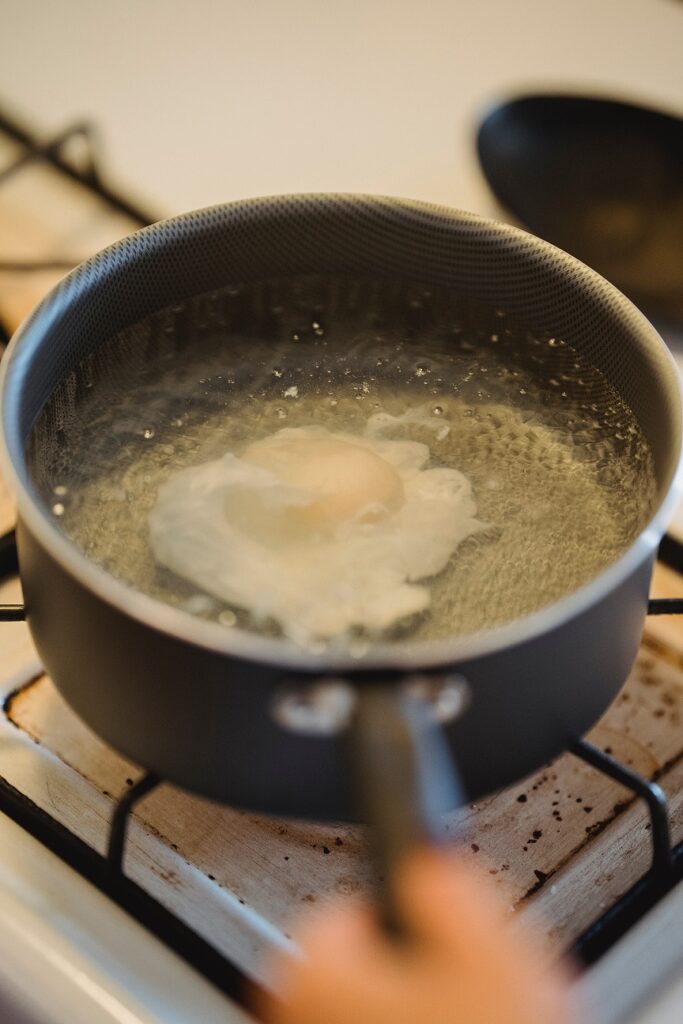The Delicate Art of Gentle Cooking
Poaching is a cooking technique that involves gently cooking food in a liquid at a low and controlled temperature. Known for its ability to preserve the natural flavors and textures of delicate ingredients, poaching is a versatile method used for a variety of foods, including eggs, fish, poultry, fruits, and vegetables.
The Basics of Poaching:
At its core, poaching is a gentle cooking process that involves submerging food in a flavorful liquid and cooking it at a low temperature. Unlike boiling, which uses high heat and rapid bubbling, poaching maintains a temperature just below boiling point, typically around 160-180°F (70-82°C). This slow and controlled cooking method helps retain moisture, tenderness, and the natural flavors of the food being prepared.
Selecting the Right Ingredients:
Poaching is ideal for delicate foods that can easily become overcooked or lose their shape when exposed to high temperatures. Common ingredients for poaching include eggs, fish fillets, chicken breasts, pears, and vegetables like asparagus or leeks. Choose fresh, high-quality ingredients to achieve the best results.
Creating a Flavored Poaching Liquid:
The liquid used for poaching adds depth and enhances the taste of the ingredients. Water is a common base, but you can infuse it with various flavors by adding aromatics such as herbs, spices, citrus zest, wine, or stock. The choice of poaching liquid depends on the food being prepared and the desired flavor profile. For example, using a vegetable stock for poaching vegetables or a court bouillon for fish can elevate the taste.
Preparing the Poaching Liquid:
To infuse the poaching liquid with flavors, bring it to a gentle simmer with the chosen aromatics. This allows the flavors to meld and infuse the liquid. You can then strain out the aromatics or leave them in the liquid for added flavor intensity. It’s important to avoid boiling the liquid to maintain the gentle nature of poaching.
Maintaining the Right Temperature:
Precise temperature control is essential for successful poaching. The liquid should be maintained at a steady simmer, with small bubbles forming and rising to the surface. Avoid rapid boiling, as it can cause the food to break apart or become overcooked. Using a thermometer or closely monitoring the liquid’s appearance can help ensure the right temperature is maintained throughout the poaching process.
Timing and Texture:
The cooking time for poaching varies depending on the ingredient and desired texture. Delicate fish fillets may only require a few minutes, while chicken breasts or eggs may need more time to cook through. It’s important to monitor the cooking process closely and test for doneness by gently pressing or using a thermometer to check the internal temperature. The goal is to achieve a tender and moist texture while maintaining the natural flavors.
Creative Flavor Combinations:
One of the benefits of poaching is the ability to infuse flavors into the food. Experiment with different combinations of herbs, spices, and aromatics to create unique and enticing flavor profiles. For example, poaching salmon with dill, lemon slices, and white wine can result in a delicate and aromatic dish. The versatility of poaching allows you to adapt the flavors to suit your taste preferences and the ingredients being cooked.
Serving and Presentation:
When removing the poached food from the liquid, handle it gently to prevent it from breaking apart. Plating the poached ingredient on a bed of fresh greens, a flavorful sauce, or accompanying it with complementary ingredients can enhance the overall presentation. Consider garnishing with herbs, citrus zest, or a drizzle of infused oil to add an extra touch of elegance.
Poaching Beyond Traditional Recipes:
While poaching is commonly associated with eggs or fish, don’t limit yourself to traditional recipes. Explore the world of poaching by experimenting with different ingredients, such as fruits for desserts or vegetables for salads. Poaching can add a touch of sophistication to a wide range of dishes and ingredients.
Health Benefits and Versatility:
Poaching is a cooking method that offers several health benefits. It requires minimal fat and preserves the natural nutrients of the ingredients. Additionally, poaching is versatile and can accommodate dietary preferences, including vegetarian and gluten-free options. It allows you to create light and flavorful dishes that appeal to a wide range of palates.
Poaching is a delicate and gentle cooking technique that allows you to preserve the natural flavors, textures, and nutrients of delicate ingredients. By understanding the basics of poaching, selecting the right ingredients, creating flavorful poaching liquids, maintaining the right temperature, and experimenting with flavors, you can master the art of poaching and create beautifully tender and flavorful dishes. Embrace the versatility and health benefits of poaching, and let your culinary creativity shine as you explore this artful cooking technique.
